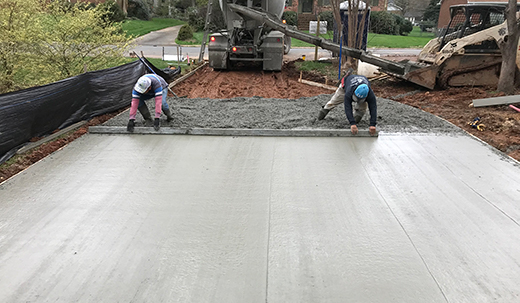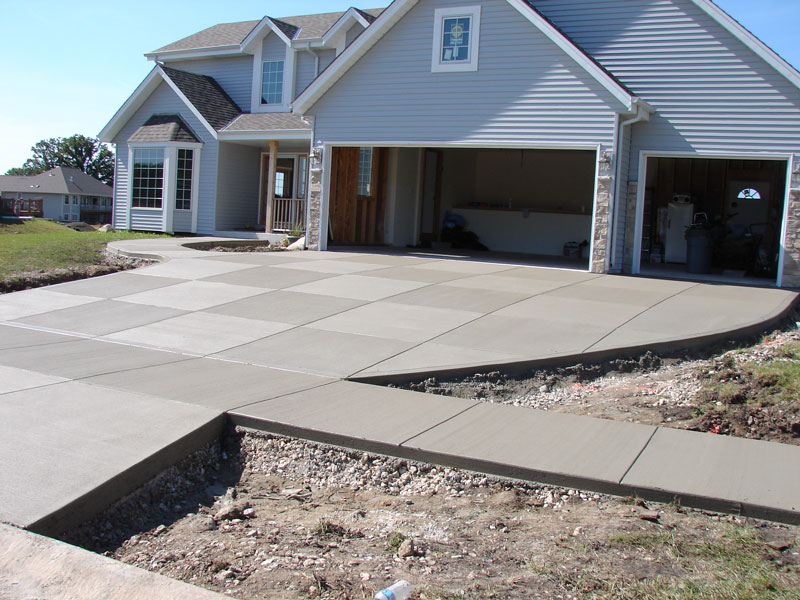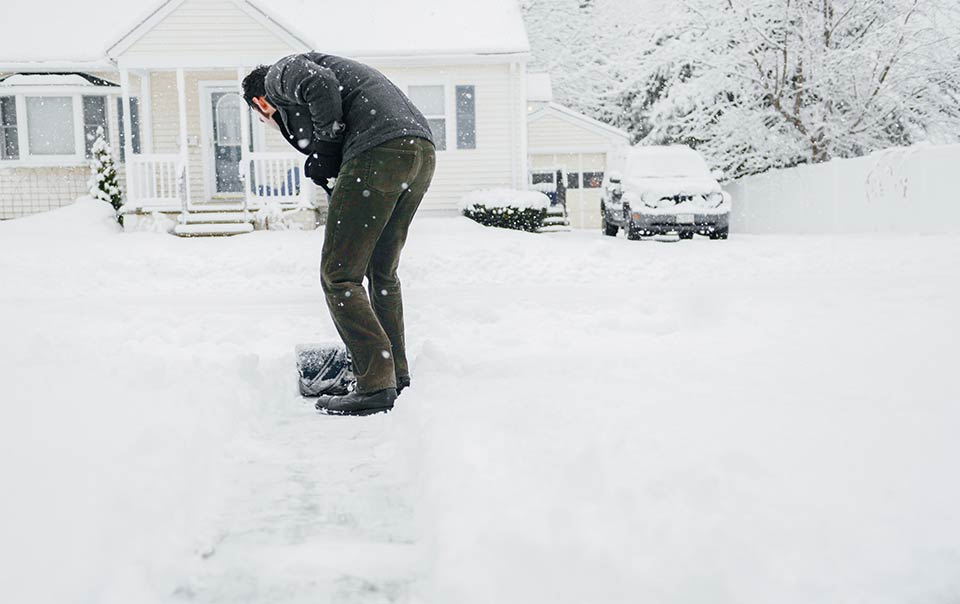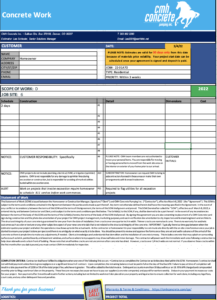Your New Concrete Questions Answered: CMH Q&A
How soon can I walk on my new concrete?
Your concrete first ‘sets’ then gradually cures. Even though it looks solid, keep in mind that it is curing below the surface. Keep vehicles and pedestrians off of your new concrete for 24 hours after it is poured and finished. After 24 hours, you can walk on the concrete, but avoid dragging or twisting your feet on the surface.
How soon can I drive on and park on my new concrete driveway?
Even though your new concrete driveway looks solid, the structure of the concrete below the surface remains fragile as it slowly cures. Wait a minimum of 7 days before driving on or parking on your new concrete garage floor or driveway slab. The concrete mixture used on your project is designed to reach 90% of it’s full strength after 7 days. It will take another 30 days to fully cure your slab before you can drive on it with heavy vehicles like an RV or large truck.
Why is my concrete different shades and colors?
Concrete may appear discolored in certain areas as it takes up to 60 days for the concrete to be fully cured. This may cause the concrete to look spotty in areas because there are different amounts of moisture evaporating from each section of your concrete. Please do not be alarmed as this is a normal occurrence and will fade in time.
Will my new concrete crack?
All concrete cracks. We intentionally use an optimum concrete mix and carefully place control joints to minimize cracking. Hairline cracks do not affect the structural integrity of your new concrete and are not unexpected. However, call us if you see cracks exceeding 1/2 inch deep and wide within the first 60 days after your concrete is poured.
What is the purpose of the lines in my new concrete slab?
We either trowel or cut lines in your concrete to allow for expansion during extreme heat and cold weather conditions. These are called control joints or expansion joints, and control where your concrete cracks, allowing the slab to expand and contract as temperatures change. This also helps prevent heaving of your slab to keep it level.
During snow or ice storms, can I put down salt or deicers on my concrete?
No. Salts or “pet safe” deicers, should never be used on your concrete surfaces. While the packaging claims that their deicers are safe for concrete, the chemicals in these materials can actually damage the concrete causing flaking, popping, and spalling of the concrete surface structure. Instead, keep your concrete slab clean with a plastic shovel and use kitty litter or sand to minimize pedestrian slipping and to help with vehicle traction.
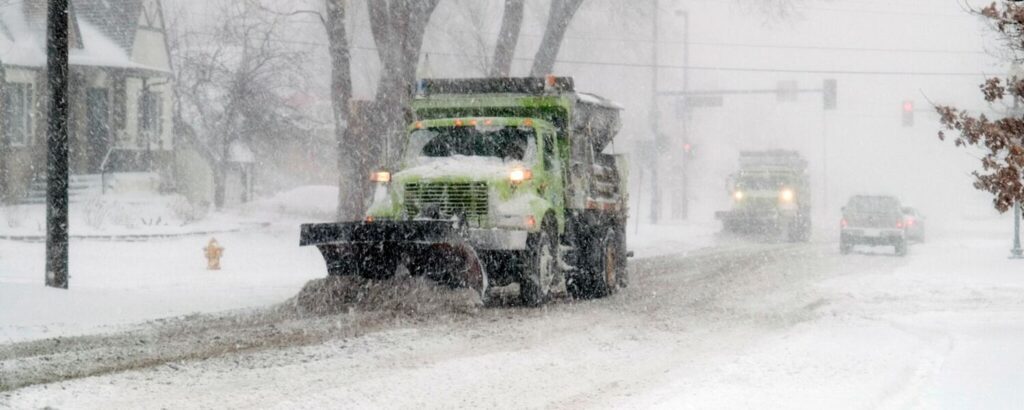 Also, be vigilant in shoveling off ice and snow that falls from underneath your vehicle. This is important because local and state highway crews use a salt and deicing chemical mix on the roads that is harmful to your concrete.
Also, be vigilant in shoveling off ice and snow that falls from underneath your vehicle. This is important because local and state highway crews use a salt and deicing chemical mix on the roads that is harmful to your concrete.
Will my colored or stamped concrete fade or show wear?
Stamped or colored concrete can fade if it is not properly maintained. We seal all of our stamped concrete installations. Going forward, we recommend resealing your new decorative concrete after 90 days, then again 1 year after installation, then every two years thereafter. However, in high traffic areas, it may need to be resealed more often. Severe Colorado winters certainly affect the surface over time. Resealing prolongs the life and beauty of your stamped concrete.
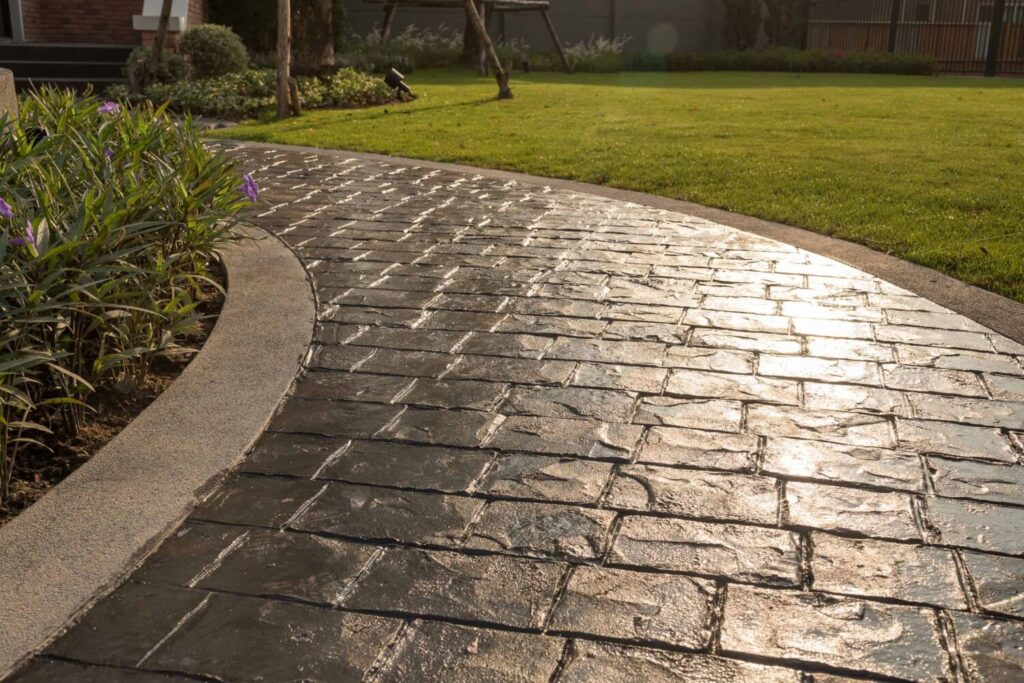
Will my stamped concrete be slippery when wet?
Your stamped concrete may become slippery when wet, but CMH Concrete offers two different types of sealers: matte finish or glossy finish. If you are concerned about this, then request a matte finish that will help keep your concrete vibrant and less slippery.
Why seal my concrete?
CMH Concrete applies sealers to all driveways and decorative concrete that we install. This is applied shortly after installation because this helps preserve your new concrete and protects it from normal wear and tear.
When should I reseal my concrete?
Any concrete area exposed to road chemicals, salt, or automotive oil, such as driveways, should be resealed every 2-3 years depending on the severity of your winter. Other areas, such as concrete steps, sidewalks, and patios, should be resealed every 3-4 years.
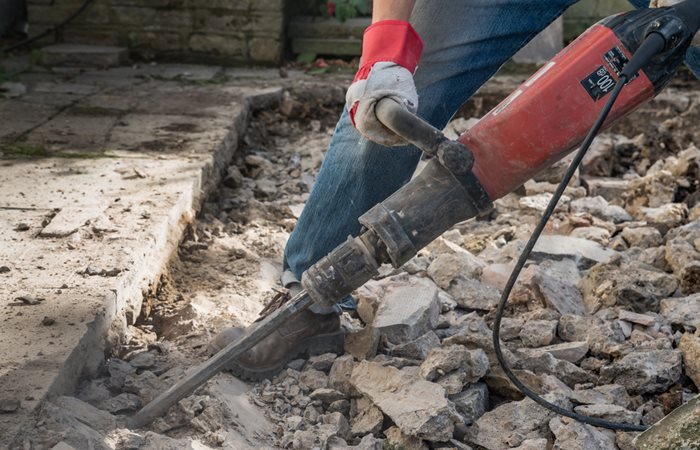
How do I prepare for a new garage slab?
Completely clean out your garage so there is nothing left on the floor. To avoid extra labor charges, be sure you have everything off the floor and out of your garage before our crew arrives to demo your concrete.
What are the risks of a ‘pour over’ slab?
Standard practice in removing and replacing concrete slabs is to demo the old concrete, haul it away, form, prep and pour a new slab. This is typically a 4″ slab for garages, sidewalks and driveways. This is covered by our standard flatwork warranty.
However, we do not warranty any ‘pour over’ concrete work because we cannot control reflective cracking that is common when you pour 1- 2″ of concrete on top of an old concrete slab. We understand some customers want to save money and just cover up old concrete on interior and exterior surfaces for temporary cosmetic reasons. We can do this work, but it is not warrantied because it is outside standard industry practices for proper concrete installation that requires complete demolition, prep, and pouring of standard depth concrete.
More questions? Email us. Click HERE.
CMH Standard Residential Agreement. Click HERE.
Your CMH Concrete Warranty. Click HERE.
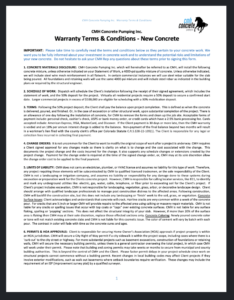 CMH Concrete Warranty T&C
CMH Concrete Warranty T&C
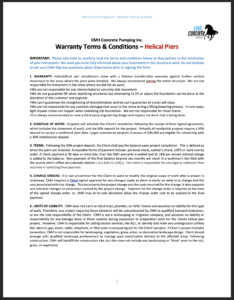 CMH Helical Piers Warranty T&C
CMH Helical Piers Warranty T&C
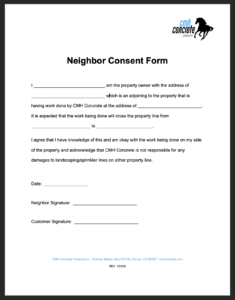 CMH Neighbor Consent Form
CMH Neighbor Consent Form
CMH Neighbor Consent Form

